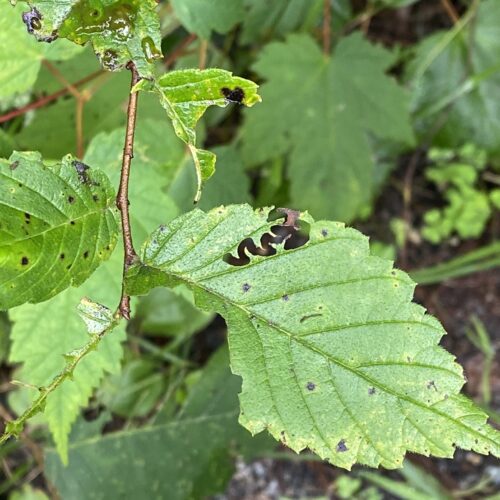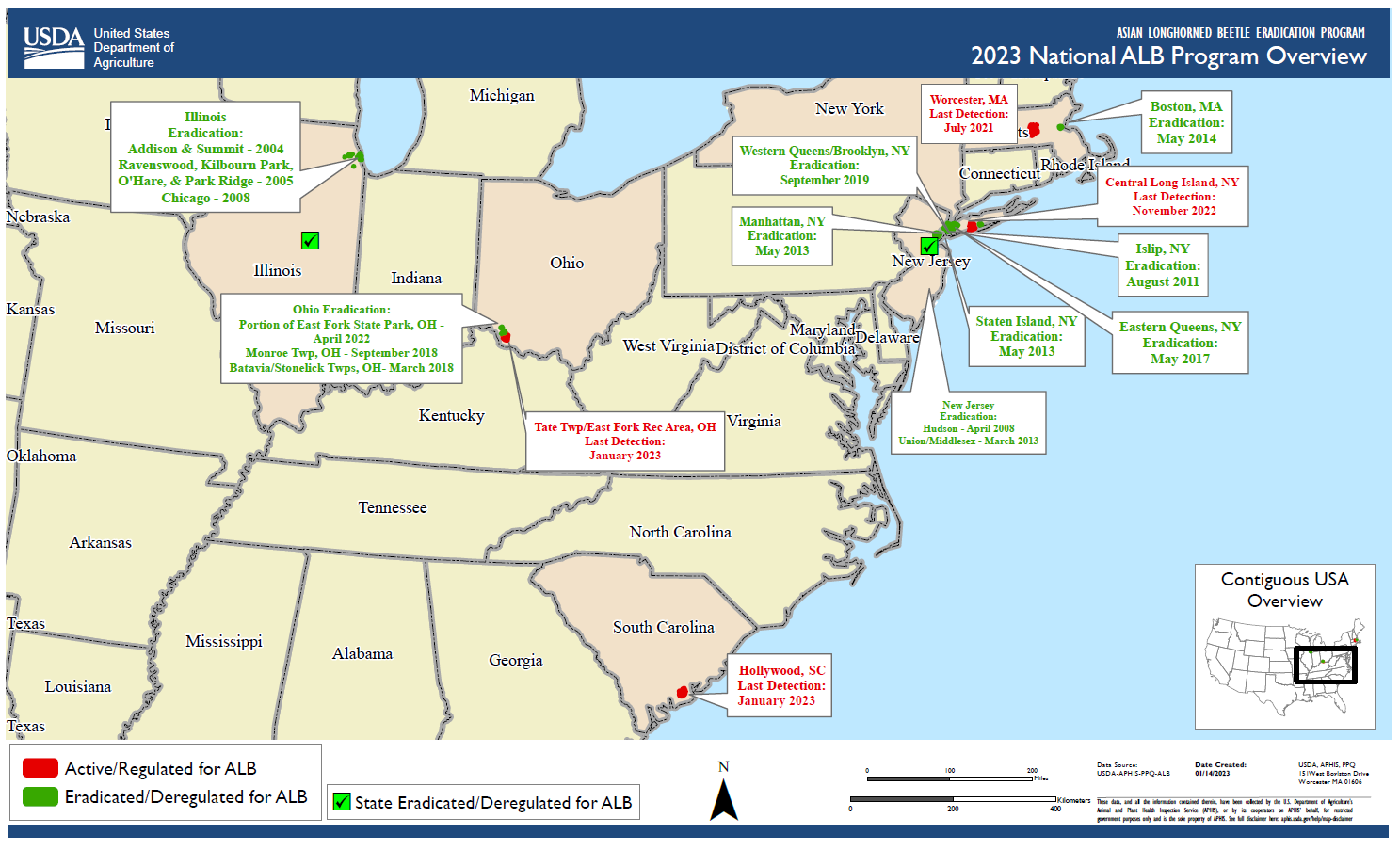Early winter is a good time to assess the state of invasive insect spread from the year and plan for next year’s treatments. It’s much better to have early detection when it comes to invasive insects because they are so much easier to treat in the early larval stages, and at this time of year the adults have died off and populations won’t spread further. Even if you live in a region with a frozen climate during the winter, you still need to stay informed. Here’s a look at where some of the biggest threats in the US now stand and also offer treatment suggestions.
Spotted Lanternfly
Spotted Lanternfly (SLF) continues its spread across the country, popping up in new counties, though often at lower frequencies than expected. While the direct impact of SLF on host trees is less deadly than initially thought, they still have a wide range of host plants and can lead to unsightly buildup of sooty mold.
The states of Connecticut, Delaware, Maryland, New Jersey, Ohio, Pennsylvania, Virginia, West Virginia all have established quarantines to prevent SLF from spreading further into additional counties or states. Established infestations outside of quarantines are in Illinois, Indiana, Kentucky, New York, North Carolina, Massachusetts, Michigan, and Tennessee, while the insect has been sighted (but no confirmation of population establishment) in New Hampshire and Vermont.
Spotted Lanternfly can spread through adult flight, or, more commonly, by hitching rides on vehicles or shipped packages or by the egg masses getting transported.
State university extensions often have more information about spotted lanternfly.
Emerald Ash Borer
Emerald Ash Borer is still considered the most destructive pest to North American forests. It has not been identified in any new states, though it has expanded its range to new counties in Colorado, Iowa, Louisiana, Maine, Minnesota, Missouri, Nebraska, Tennessee, Texas, and Wisconsin. It has not spread further than its initial discovery in Washington County, Oregon, which so far remains the only west coast find to date.
Emerald ash borer has been identified and confirmed in 35 US states and 6 Canadian provinces.
Biocontrols in the form of parasitic wasps have been released in 31 states and 3 Canadian provinces, with encouraging results so far.
We suggest treatment of vulnerable ash trees in counties near infested ones where there is a high risk of future tree damage. Acting proactively will ensure trees are saved in the long run. Injections of TREE-äge will provide 2 years of protection from EAB damage.
Asian Longhorned Beetle
Asian Longhorned Beetle eradication efforts continue in Massachusetts, New York, Ohio, and South Carolina. No quarantine areas were closed this year, but neither were there any expansions or discoveries in new states.
ALB moves slowly on its own, so its primary methods of spread is through transported firewood. Obey any state quarantine regulations and consider treating at-risk host trees, including maple and other hardwoods, near quarantine areas.
Elm Zigzag Sawfly
Elm Zigzag Sawfly, so named for the zigzag pattern left in leaves by feeding larvae, is a species native to Asia that feeds on a wide range of elm leaves. First discovered in the US in 2021 in Maryland, New York, North Carolina, Pennsylvania, Vermont, and Virginia, it has now spread in 2023 to counties in Massachusetts. This insect can have multiple generations in one year and can cause partial to complete defoliation of trees. The full impact of this species on our ecosystems has not yet been realized, though tree mortality due to Elm Sawfly has not yet been reported in Europe.

Suggested Treatments
Luckily, Arborjet | Ecologel’s standard suite of insect control products work on all of these pests. For woodboring beetles like Emerald Ash Borer and Asian Longhorned Beetle, injectable solutions like TREE-äge R10 will protect the tree for 2 years from damage.
For piercing, sucking insects like SLF or leaf-chewing caterpillars, injections of ACE-jet will provide protection. General insect control products such as AzaSol or IMA-jet will also work.
Speak to your local regional technical manager for more information about what pests may be in your area and about the best protective products.




